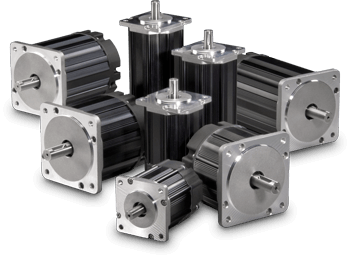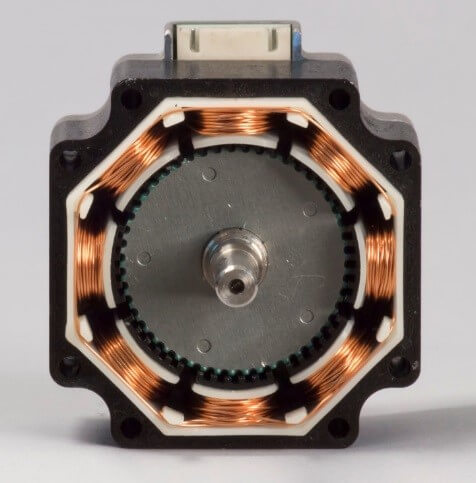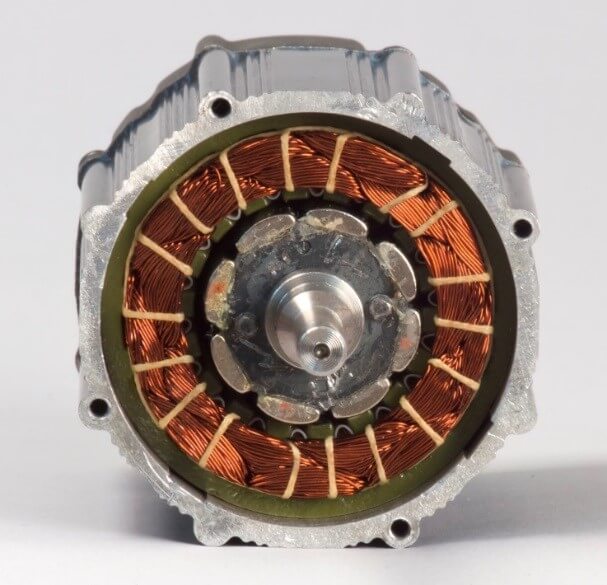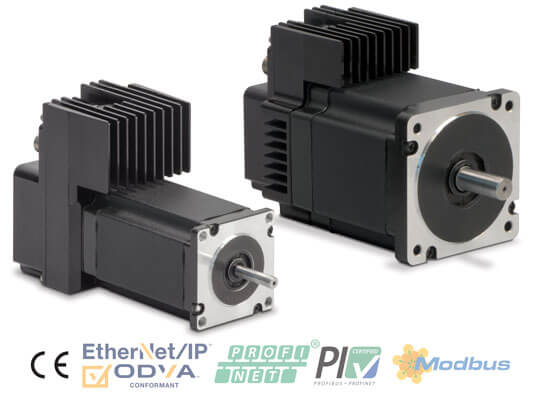Motor selection for electric linear motion. Stepper vs servo
By Tolomatic on February 6, 2018
An electric linear motion system nee ds a motor. Unlike pneumatic cylinders that are powered by a central air compressor, electric linear actuators are powered by electric motors. The mechanisms in the actuator convert the motor’s rotary motion into linear motion.
ds a motor. Unlike pneumatic cylinders that are powered by a central air compressor, electric linear actuators are powered by electric motors. The mechanisms in the actuator convert the motor’s rotary motion into linear motion.
Machine designers can choose either servo or stepper motors for their electric linear actuator applications. We’ve laid out the full story of the pros and cons of each of these options in our white paper, Choosing stepper- or servo-driven actuators to replace air cylinders. You can download a copy here.
Stepper Motors 
A stepper motor is a brushless DC electric motor that divides its full rotation into equal steps. In a stepper motor, the rotor has magnetic teeth that “lock in” or align to the electromagnetic poles in the stator.
The motor’s position is known by the number of input pulses (steps) commanded. A common stepper motor moves 1.8° per step or has 200 steps per revolution. The motor's shaft can be commanded to move and hold at one of these steps without any feedback sensor.
Pros
- Accurately controlled in open loop position control. No feedback information needed to position the motor.
- Cost is usually lower than servo motors. No position feedback sensor or associated cabling required.
- Provide high torque at low speeds.
- When the system is powered down, detent torque (torque at the output shaft when the motor is not energized and the shaft is rotated externally) can hold the actuator’s position.
- Excellent repeatability. Accuracy is commonly within 3-5%.
Cons
- Lose accuracy if there is insufficient motor torque to drive the load. Motor may miss steps.
- Often sized 50% above the maximum torque required to prevent problem of lost steps. This raises system cost.
- Motor resonance causes torque loss and audible noise.
Servo Motors
 A brushless servo motor has three wiring phases in the stator. The rotor has several pairs of permanent magnets aligned with alternating north and south poles. When the phase windings are energized, torque is generated between the phase’s electromagnet poles and the rotor’s magnetic poles causing the rotor to rotate. Speed is controlled by adjusting the amount of current in the phase winding. More current creates more torque to accelerate the rotor and load.
A brushless servo motor has three wiring phases in the stator. The rotor has several pairs of permanent magnets aligned with alternating north and south poles. When the phase windings are energized, torque is generated between the phase’s electromagnet poles and the rotor’s magnetic poles causing the rotor to rotate. Speed is controlled by adjusting the amount of current in the phase winding. More current creates more torque to accelerate the rotor and load.
A servo motor is paired with some type of encoder to provide position and speed feedback. There are three ways to control a brushless servo:
- current/torque control
- velocity control
- position control
Often all three control types are available in a controller.
Pros
- Offer more control over variables such as position and speed.
- Provide higher accuracy because they have feedback sensors and operate in closed loop control.
- Maintain torque throughout speed range. Can also output brief periods of higher torque called “peak torque.”
Cons
- Require more components and cabling than stepper motors. More complex; may cost more.
- Control loops for current, velocity, and position must be tuned to meet performance criteria. Tuning adds complexity.
Servo motors are a high-performance alternative to stepper motors. The encoder and controller of a servo system mean additional cost, but they optimize the performance of the overall system (in terms of speed, power and accuracy).
The lack of feedback inherent with a stepper motor limits its performance, plus a stepper motor can only drive a load that is well within its capacity.
Our solutions
Tolomatic offers both servo and stepper controllers, drivers and motors that are especially designed for linear motion applications. Our new ACSI integrated servo motor/drive/controller provides flexible, easy to use, integrated servo motion control.
The ACSI integrated servo motor is a cost-effective solution for automating additional axes of motion. It creates a space-saving machine design by eliminating a drive in a cabinet. The ACSI can be controlled with simple digital I/O or analog input and is available in both linear and rotary operating modes.
With built-in configurations for all Tolomatic electric actuators, the ACSI integrated servo motor/drive/controller creates linear motion quickly and easily in the desired linear units. When ordered with a Tolomatic actuator, the ACSI is mounted to the actuator, configured and tested as a system. The ACSI is available in industrial Ethernet protocols, including EtherNet/IP, PROFINET and Modbus TCP.
Download our ACSI catalog here.
Watch our video.
Resources
Once you’ve selected an actuator from us, our Your Motor Here® program ensures you get the right mounting hardware for your motor/actuator choice.
For a review of stepper and servo motors for electric linear motion, download our white paper, Choosing stepper- or servo-driven actuators to replace air cylinders.
Interested in electric linear motion? Join the discussion at our LinkedIn group.

 Ask an Engineer
Ask an Engineer